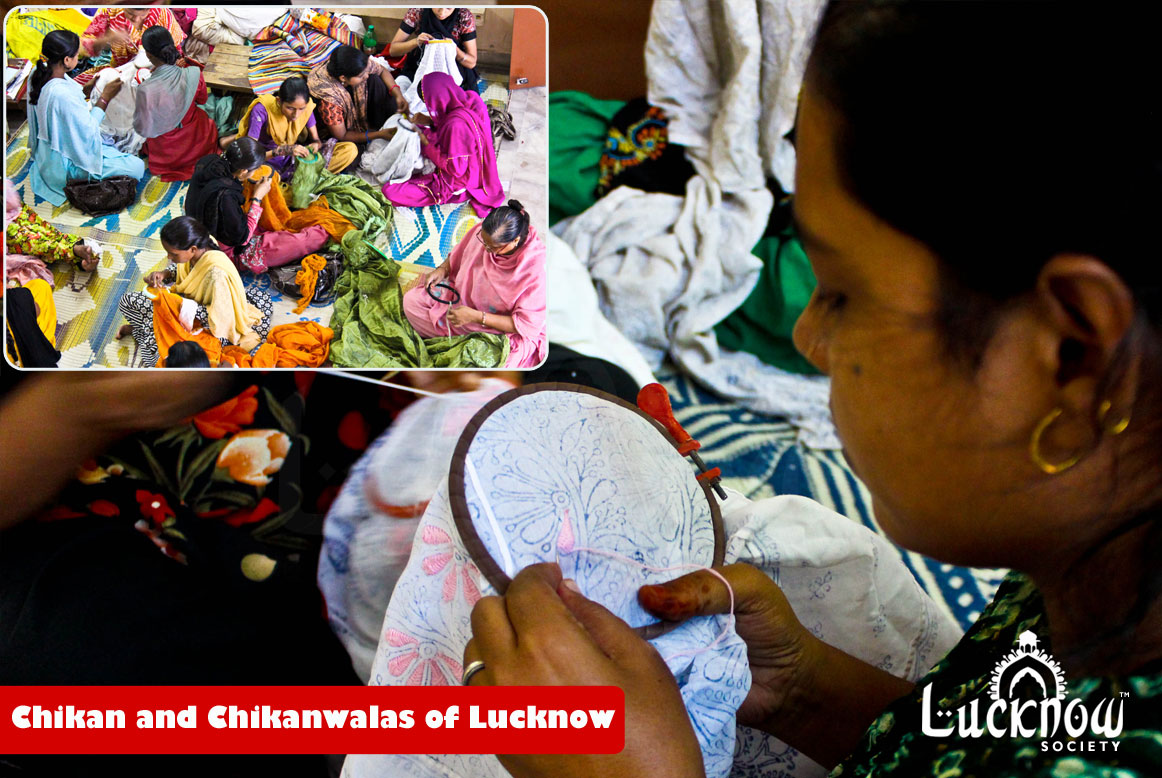Chikan and Chikanwalas of Lucknow
Chikan is hand worked flowered muslin and the Chikan of Lucknow is in great demand in all parts of world. It developed during the period when the Mughals ruled. The name Chikan has been derived from the Persian word Chakin or Chikeen meaning a cloth wrought with needlework. The most of this work is done on tanzeb, a kind of muslin of local manufacture, which is woven generally in webs of between 19 and 20 yards in length and 14 girahs ( a girah is a fraction more than an inch) in breadth. Some of the varieties of stitches are Tepchi, Bakhiya, Hool, Zanzeera, Rahet, Banarsi, Khatau, Phanda, Murri, Jali, Turpai, Darzdari, Pechani, Bijli, Ghaspatti, Makra, Kauri, Hathkadi, Banjkali, Sazi, Karan, Kapkapi, Madrazi, Bulbul-chasm,Taj Mahal, Janjeera, Kangan, Dhania-patti, Rozan, Meharki, Chana-patti, Baalda, Jora, Keel-kangan, bulbul, sidhaul, etc. Little girls 7 or 8 years of age may be seen sitting at the doors of houses in old Lucknow busily moving their tiny fingers, over a piece of tanzeb and working butas (flowers) and helping home by their earnings which are little enough, only Rs. 20 or 30 for 100 butas. It is by this early beginning that Chikan workers attain the great skill they do in embroidery, but even when the greatest skill has been attained the wages paid to the embroiderer are low. All this work is wrought by embroiderer who are given out work and paid by the piece and the wages paid are determined by the skill of the workman and the difficulty of the work.
Credit : Contributor Member – Mohsina Mirza

